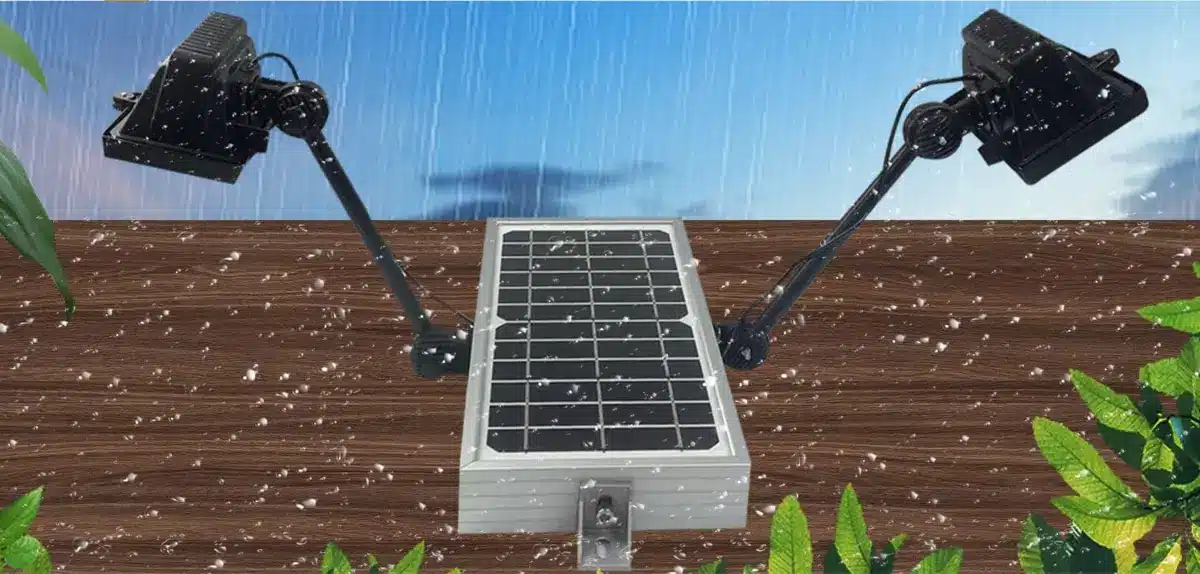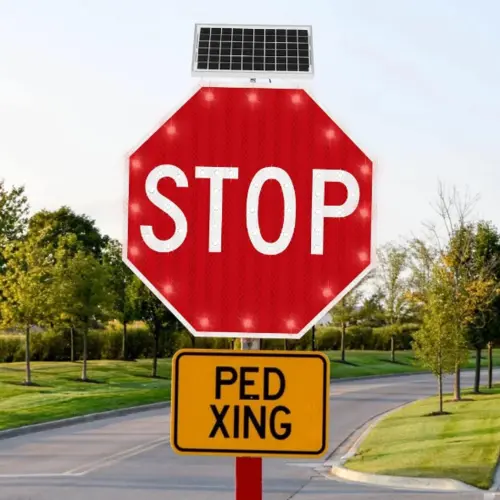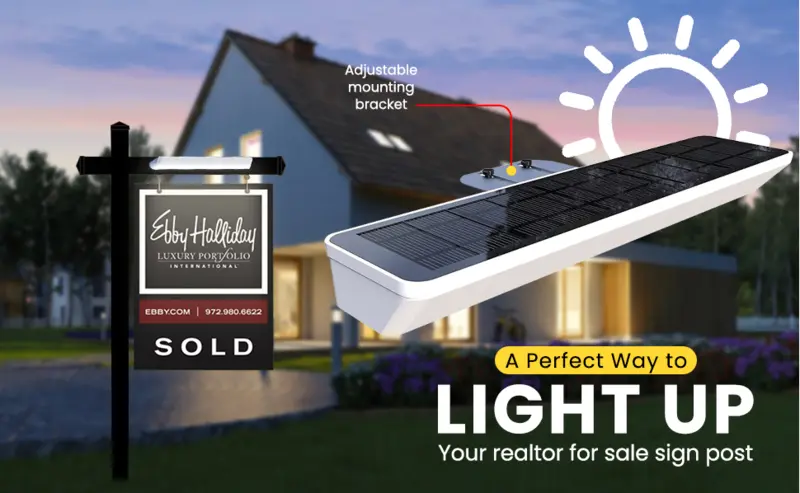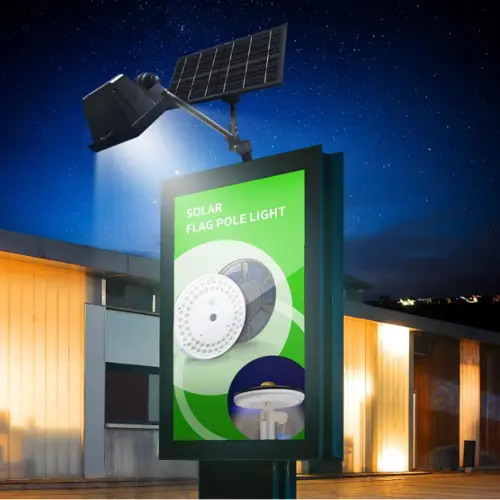
Illuminating Cityscapes: My Journey with Solar Lights for Signs
Welcome, fellow sustainability enthusiasts! I can’t wait to share the solar technology aspect lighting up my interest lately – Solar Lights for Signs. These nifty innovations brighten our public spaces, represent a significant stride towards sustainable urban living, and mark an exciting chapter in my solar industry journey.
Have You Ever Noticed the Impact of a Well-lit Sign at Night?

Why solar lights for signs? They guide, inform, and add a dash of charm to our cities. But when such signs draw their power from the sun, their role goes beyond illumination. Solar Sign Lights actively participate in energy conservation, lowering emissions and cutting operational costs. It’s a win-win situation!
What strikes me most about solar lights for signs is their inherent versatility. Whether dealing with a remote highway sign, a quiet city park notice, or a buzzing billboard, these solar devices require no complex wiring and offer easy installation anywhere.
In Our Rapidly Evolving Urban Spaces, Effective Signage is Critical
Signs of various types are vital cogs in our cityscape machinery. However, traditional methods of lighting these signs often present high energy consumption, inflated maintenance costs, and environmental concerns. This is where solar lights for signs step in, providing a sustainable, innovative, cost-effective solution that readily addresses these issues.
Implementing solar sign lights perfectly aligns with the world’s growing emphasis on sustainability. By harnessing solar energy, we lean into an abundant and renewable resource, gradually reducing our cities’ carbon footprint. These solar-powered devices are not just lighting up signs; they’re lighting the way toward a low-carbon economy.
Looking at it Financially, Solar Lights for Signs Prove to Be an Attractive Proposition
While the initial investment for installing solar sign lights might seem substantial, the long-term benefits significantly outweigh these costs. The operational expenses of these systems are minimal as they rely on solar energy, a freely available resource. Furthermore, solar lights require less maintenance and lower replacement costs than conventional lighting systems. This is mainly due to their extended lifespan, making them an economically sound choice.
The impact of solar lights for signs in modern cities extends beyond energy conservation and cost-effectiveness. The strategy paints a vision of a future where city functionality and sustainable practices merge. As more urban spaces integrate these solar-powered sign lights into their infrastructure, we see the dawning of an environmentally conscious cityscape.
Who’s Flipping the Switch? The Diverse Users of Solar Sign Lights
Businesses
Businesses of all types and sizes are one of the primary users of solar sign lights. They use solar lights to illuminate their signs, banners, and billboards. Solar lights for signs are a perfect solution, whether it’s a restaurant sign that needs to be visible throughout the night or a retail store sign that needs to stand out in a crowded commercial area. They are a cost-effective, reliable, and eco-friendly way to enhance visibility and attract potential customers.
Municipalities
Municipalities extensively use solar sign lights to light up city signage. These include street name signs, parking signs, traffic signs, and informational signs. Solar lighting ensures these signs are well-lit and visible, improving safety and aiding navigation. Furthermore, using solar lights aligns with a city’s sustainability goals and efforts to reduce electricity consumption.
Parks and Recreation Facilities
Parks, recreation facilities, and other public spaces frequently utilize solar sign lights. They use them to illuminate signs for amenities, trails, rules, and regulations. Solar lighting in these settings has the added advantage of not requiring wiring or connection to the electrical grid, making them ideal for remote or hard-to-reach locations.
Educational Institutions
Schools, colleges, and universities use solar sign lights to light up campus signs. These could be directional, informational, or signs displaying the institution’s name or logo. Solar lights offer a practical and sustainable solution to keep these signs visible at night or in low-light conditions.
Real Estate Industry
The real estate industry also benefits from using solar sign lights. Realtors use solar lights to illuminate For Sale/Rent Signs, ensuring they are visible day and night. This simple addition can make a significant difference in attracting potential buyers or renters.

Construction Sites
Construction sites often use solar sign lights for safety and informational signs. These sites require reliable lighting solutions that can withstand harsh conditions, and solar lights meet these needs while being easy to install and move as required.
Shining a Light on Different Types of Solar Sign Lights
Solar sign lights come in various forms to cater to different needs and preferences. Here are the main types:
Solar Billboard Lights: These are larger, more powerful lights designed to illuminate billboards. They often have powerful solar panels and high-intensity LEDs to ensure the billboard is well-lit throughout the night.
Solar Spotlights for Signs: Spotlights are focused, intense lights that are perfect for highlighting specific areas of a sign. You can direct them exactly where the light is needed most.
Solar Flood Lights for Signs: Similar to spotlights but with a wider beam angle, flood lights illuminate a larger area. They’re great for bigger signs or when you want to light up not only the sign but also the surrounding area.
Solar LED Strip Lights: These are flexible and attach directly to the sign. They’re great for outlining the sign or creating attention-grabbing lighting effects.
Solar Bollard Lights: They illuminate the ground area around freestanding signs. Bollards also contribute to overall landscape lighting.
Solar Warning Lights: You often find them on traffic or safety signs. They flash or remain solid to draw attention to the sign.
Traffic Sign Solar Lights: These lights ensure traffic signs, such as stop signs or speed limit signs, remain visible at all hours for motorists.
The type of solar sign light to use depends on the sign’s size, its location, and the effect you want to achieve. Consider these factors when deciding on the most suitable type of solar light for your sign.
Casting Light on the Different Setups for Solar Lights for Signs
Direct Mount Solar Lights: They mount directly on the sign, perfect for small to medium-sized signs. The solar panel is usually on top of the light fixture, making installation simple.
Top-Mount Solar Lights: These are on top of the sign, typically on a pole that extends above the sign. This setup allows the solar panel to catch maximum sunlight, making it practical for larger signs.

Side-Mount Solar Lights: Attached to the side of the sign or on a separate pole beside it, these lights work well for signs with substantial width or height.
Ground-Mount Solar Lights: Ideal for monument signs or low-to-the-ground signage, these solar lights are installed at the base of the sign and angled upward to illuminate the sign effectively.
Standalone Solar Lights: In this setup, the solar light and its panel are installed on a separate pole from the sign. This setup is useful for large, freestanding signs where direct or top-mounting isn’t feasible or when the sign is shaded.
Multi-Light Setup: Multiple solar lights might be used for large billboards or monument signs. Each light may have its own solar panel or be connected to a central, larger solar panel.
Embedded Solar Lights (Box Setup): In this innovative configuration, the solar lights are embedded within the sign, creating a seamless and modern aesthetic. This setup is often used for box or monument signs, where the solar lighting system can be integrated into the sign structure. It allows for a clean look while effectively illuminating the sign from within.
These setups offer flexible solutions to illuminate signs of all shapes and sizes, ensuring effective and sustainable illumination across various scenarios.
Remember, the choice of setup largely depends on the size of the sign, its placement, the amount of sunlight it gets, and the aesthetic requirements of the location. Whether standalone or embedded, these setups offer versatile solutions contributing to a sustainable and cost-effective sign lighting strategy.
Wrapping it up
The growing presence of Solar Lights for Signs is a testament to solar technology’s potential to transform our urban environments. In our shared journey towards more sustainable cities, these lighting solutions do more than illuminate paths and signs – they signal the onset of greener practices, serving practical, sustainable, and economic benefits. As a professional in the field, it’s a privilege to promote and witness the adoption of this green technology for the betterment of our shared urban spaces. The future of solar looks bright!

